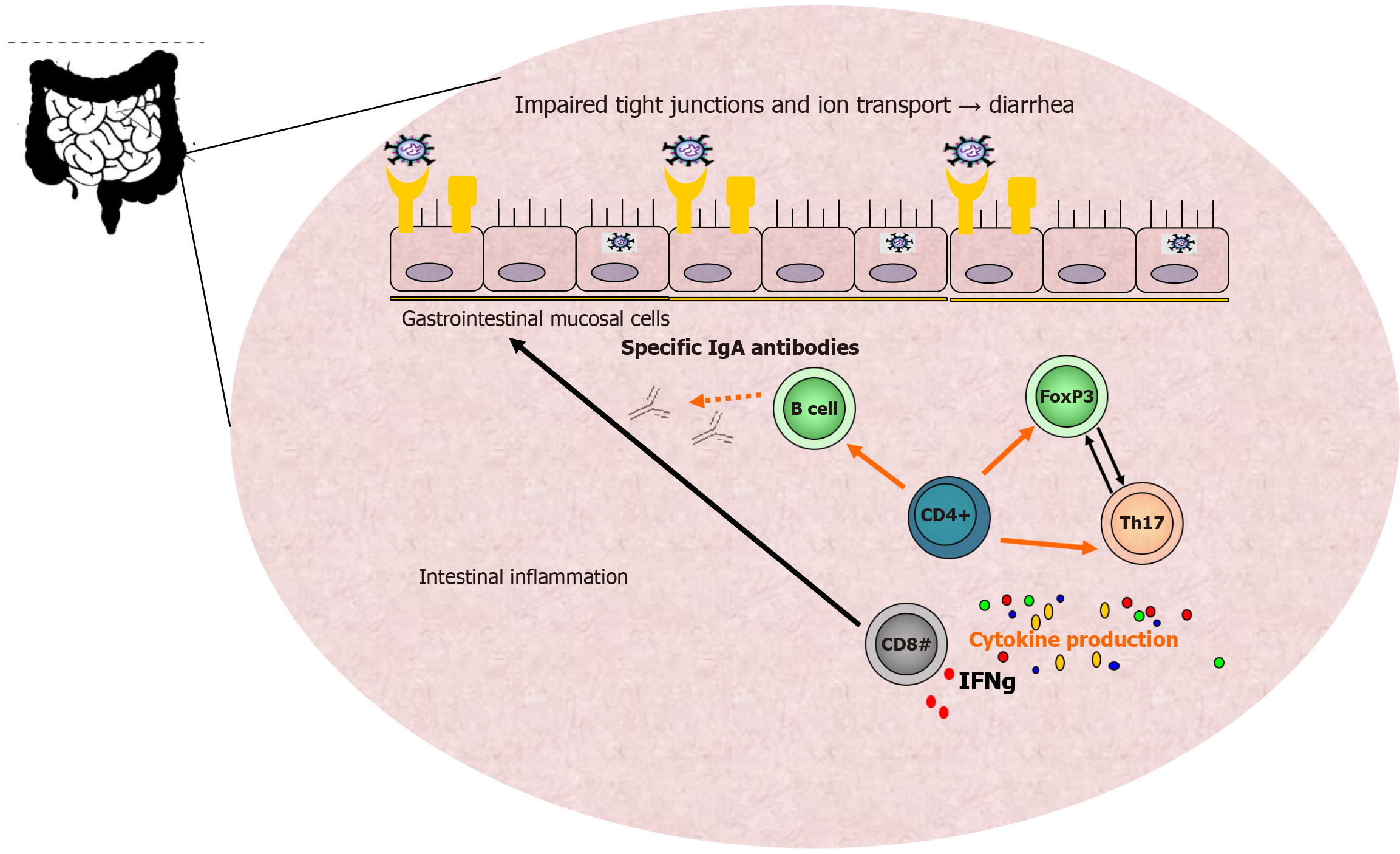Copyright
©The Author(s) 2025.
World J Gastroenterol. Aug 21, 2025; 31(31): 105665
Published online Aug 21, 2025. doi: 10.3748/wjg.v31.i31.105665
Published online Aug 21, 2025. doi: 10.3748/wjg.v31.i31.105665
Figure 1 Overview of severe acute respiratory syndrome coronavirus 2-induced diarrhea and intestinal inflammation.
This figure illustrates the key mechanisms involved in severe acute respiratory syndrome coronavirus 2-induced diarrhea and intestinal inflammation. The impairment of tight junctions and ion transport in the gastrointestinal mucosa leads to diarrhea. The immune response in the gastrointestinal tract also includes specific IgA antibodies produced by B cells. The activation of CD4+ and CD8+ T cells along with the differentiation of Th17 cells and the regulation by FoxP3, contributes to the inflammation observed in intestinal cells during severe acute respiratory coronavirus 2 infection. These immune interactions are shown to trigger cytokine production, including interferon-gamma, which exacerbates intestinal inflammation. IFN: Interferon.
- Citation: Miteva DG, Gulinac M, Peruhova M, Velikova T. Exploring the oncogenic potential of SARS-CoV-2 in the gastrointestinal tract. World J Gastroenterol 2025; 31(31): 105665
- URL: https://www.wjgnet.com/1007-9327/full/v31/i31/105665.htm
- DOI: https://dx.doi.org/10.3748/wjg.v31.i31.105665









